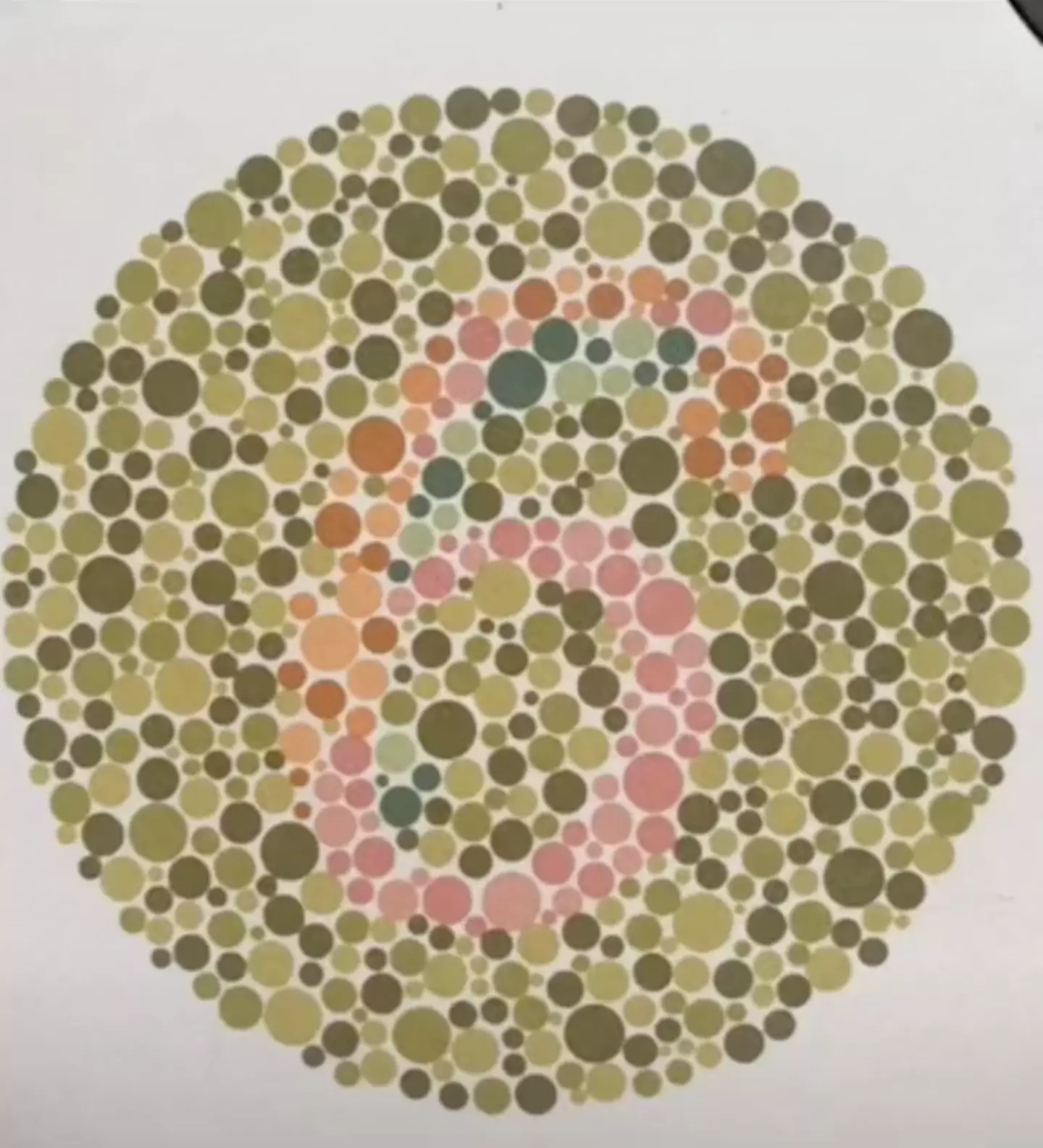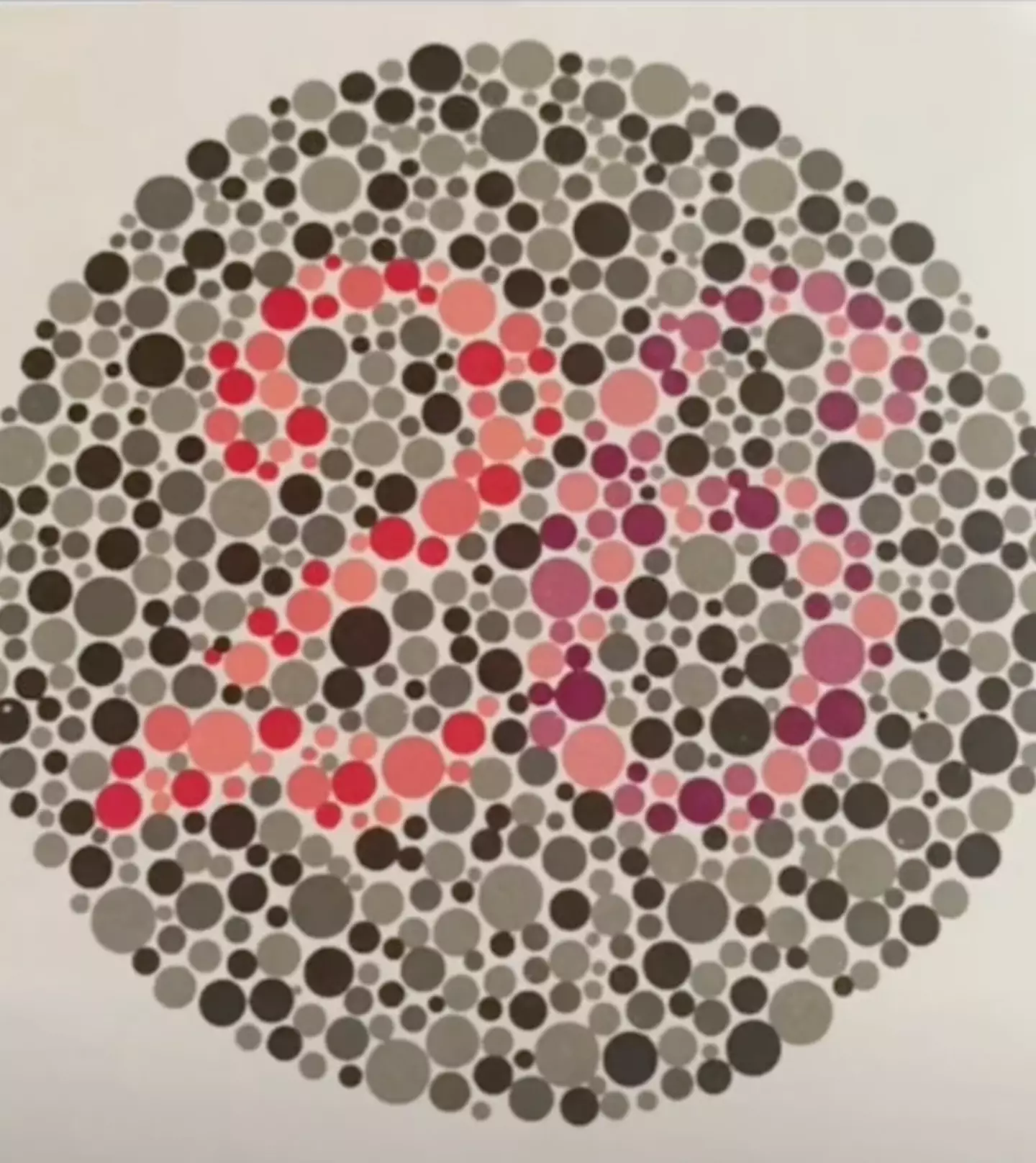One enduring memory of high school is being escorted down to the school nurse for some sort of checkup.
Sat round a table in what was presumably a meeting room, a black folder was slapped down on the table.
It was opened to reveal a page covered in dots. The nurse asked if I could see anything in the dots.
Advert
Nope.
She then traced the shape of a number, and after some straining, a vague outline appeared.
It turns out my angst-ridden teenage self had something completely new to worry about in the form of having deficiency in my colour vision.
I had been presented with an Ishihara Chart, a tool used to investigate if someone has a colour deficiency in their vision.
Now a video posted to TikTok by dr.mfarr has gave a glimpse into how this test works - and it's left commenters with a few realisations.
Advert

It shows one of the plates for the test as a voice over explains: "If you've ever wondered if you're colour blind or colour deficient, test it out."
The video then cycles through a series of images, explaining which number you should see if you have normal colour vision, and which you will see with a colour deficiency.
Naturally, I had to take the test to see if anything had changed. The first number was absolutely clear, there was definitely a five right there.
Amazing, an improvement! Before I couldn't see any numbers! Apparently, five means a deficiency. Ah.
Advert
After cycling through the rest of the tests, suffice to say that yes, I do perhaps have a colour deficiency.
Well fancy that.
And it seems like other viewers in the comments were also figuring out the same thing too.

"I got that deficiency." one person said, while another wrote: "I got all colour deficiency."
Advert
Many viewers reported what they had seen, with a third saying: "On 4 I saw nothing. But on 5 I actually kinda saw the 2."
"He said 26 and I saw 76...uhh." a fourth person said.
"I can't see the last 2?" a fifth viewer commented.
And a final said: "aww man... my eyes are way worse than I thought."
According to the NHS, colour vision deficiency is what people usually refer to as colour blindness - although actual colour blindness is very rare.
Advert
The condition simply means that you see colours differently to most people and can struggle telling various colours apart.
The NHS state that most people often have trouble distinguishing shades of yellow, red and green - which is known as 'red-green' colour vision.
In some rare cases, blue, greens and yellows might be harder to spot - known as 'blue-yellow' deficiency.
If you think you might have colour deficiency, then there's no need to worry as it usually isn't the indicator of something serious, however, it's best to go to your opticians for a proper test.
